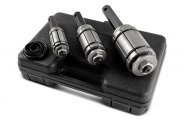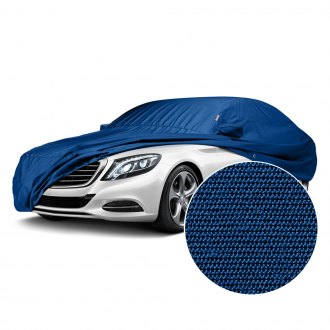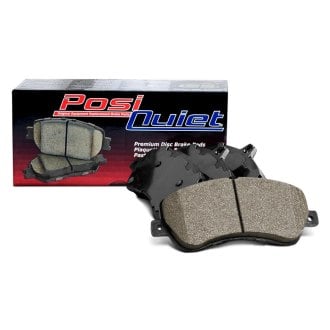Morgan Accessories & Parts
Morgan Parts
Morgan Wheels & Tires
Morgan Exterior Accessories
Morgan Automotive Lighting
Morgan Body Parts
Morgan Interior Accessories
Universal Audio & Electronics
 Installation Parts
Installation Parts Stereos
Stereos Speakers
Speakers Amplifiers
Amplifiers Subwoofers
Subwoofers Cameras & Driver Safety
Cameras & Driver Safety Alarms & Remote Start
Alarms & Remote Start CB Radios & Components
CB Radios & Components Antennas & Components
Antennas & Components Mobile Phone Cables & Connectors
Mobile Phone Cables & Connectors Bluetooth
Bluetooth Equalizers & Processors
Equalizers & Processors Batteries & Power
Batteries & Power Video
Video Radar Detectors
Radar Detectors GPS Systems
GPS Systems Mounts & Chargers
Mounts & Chargers Action Cameras & Accessories
Action Cameras & Accessories
Morgan Automotive Tools
 Oil Change Tools
Oil Change Tools Engine Service Tools
Engine Service Tools Pullers & Installers
Pullers & Installers Spark Plug & Ignition Tools
Spark Plug & Ignition Tools Wheel & Tire Service Tools
Wheel & Tire Service Tools Brake Service Tools
Brake Service Tools Suspension & Steering Service Tools
Suspension & Steering Service Tools Fuel System Service
Fuel System Service Transmission & Drivetrain Service Tools
Transmission & Drivetrain Service Tools Cooling System Service Tools
Cooling System Service Tools A/C Tools & Equipment
A/C Tools & Equipment Electrical System Tools
Electrical System Tools Diagnostic & Testing Tools
Diagnostic & Testing Tools Exhaust System Service Tools
Exhaust System Service Tools Auto Glass Tools
Auto Glass Tools Lockout Kits
Lockout Kits Jacks
Jacks Automotive Lifts & Stands
Automotive Lifts & Stands Repair Manuals
Repair Manuals Automotive Paint
Automotive Paint EV Charging
EV Charging Battery Chargers & Jump Starters
Battery Chargers & Jump Starters Dollies & Movers
Dollies & Movers Creepers
Creepers Auto Detailing
Auto Detailing Key Cutting Machines
Key Cutting Machines Dent Repair Tools
Dent Repair Tools Service Carts
Service Carts Vehicle & Parts Protection
Vehicle & Parts Protection
Morgan is an anachronism in today’s corporate, assembly line, mass production world – an independent, family-owned, auto maker that only assembles a limited number of hand-crafted automobiles each year. What makes Morgan even more of a rarity is that they’ve been building cars this way continuously since H.F.S. Morgan built his first 3 Wheeler in 1909. Morgan built his car because he wasn’t satisfied with what other auto makers had to offer. Today’s Morgans are built for kindred spirits, enthusiasts who aren’t content with ordinary sports cars. Only Morgan can take classic inspired styling and state-of-the-art technology and bring them together in a performance car that is hand-crafted to the highest standards using the finest materials.
H.F.S. Morgan’s first mechanical experience was with England’s railways, but after owning a few cars, he turned his interest to automobiles and opened a garage in 1905 where he serviced cars and became a dealer for several established makes including Wolseley and Rover. His business was successful, but as an engineer he had some ideas for a vehicle of his own design and so built his 3 Wheeler, a type of vehicle that soon became known as a “cyclecar”. It was little more than a simple, lightweight chassis fitted with a seat and powered by a motorcycle engine, but the resulting extremely favorable power-to-weight ratio allowed the vehicle to accelerate as fast as larger, more powerful cars. Morgan built the vehicle for his own personal use, but it received such enthusiastic reaction from the public that he decided to design a version for production.
Morgan’s 3 Wheeler created a whole new genre of simple, inexpensive vehicles that brought motorized mobility to the masses. Because they were classified as motorcycles, 3 Wheelers were not subject to the horsepower tax that was levied on cars in Britain. The first tiller-steered, single seat Morgans were not that successful, but later models with steering wheels and 2 and 4 seats sold well. Sales were boosted by the company’s successful racing exploits. From the very beginning Morgans were entered into many forms of motorsports competition including reliability trials, road races, and hill climbs, where the company’s engineering prowess was repeatedly demonstrated with numerous wins and world records. In fact Morgans were so successful that at some tracks, to make the racing more competitive, they were required to start a lap behind 4-wheeled cars. Various 3 Wheelers produced until 1939, including the Grand Prix, Aero and Sports models, used air-cooled V-Twin motorcycle engines supplied by J.A. Prestwich and later Matchless. In 1933, the 4-cylinder Ford powered F-4 4-seat touring car debuted, and except for during World War II remained in production until 1952.
The 4-4, signifying 4 cylinders and 4 wheels, was Morgan’s first four-wheeled car. Introduced in 1936, it is still in production today, the longest running continuously produced model in automotive history. Featuring a box-section crossmember steel chassis and a steel-paneled body over an ash wood frame, it was initially offered as a 2-seat roadster, which was followed by a 4-seater and then a drophead coupe (convertible). The first 4-4 was powered by an 1122cc Coventry Climax engine that sent its 34 hp through a 4-speed transmission. In the tradition of the 3 Wheelers, some 4-4s were built for racing and entered in events like the Le Mans 24-hour race. The car has been updated through several series over the years, receiving many chassis and drivetrain upgrades along the way, including a model designation change from 4-4 to 4/4. The current model is powered by a 110 hp 1.6L Ford engine mated to a Mazda 5-speed transmission that can send the lightweight 1752 lb. car to a top speed of 115 mph and 0-62 mph in 8 seconds.
During WW II car production stopped and Morgan made carburetors and aircraft undercarriage parts for the war effort. In 1950 the +4, which featured a larger, more powerful engine on a strengthened and lengthened 4/4 chassis, was introduced. The first version of the +4 was in production until 1969, and was upgraded with Triumph engines and disc brakes during that time. A significant variation of this model was the 2-door coupe +4+, of which only 26 were produced between 1964 and 1967. +4 production resumed from 1985-2000, when the vehicle was powered by first Fiat and then Rover engines, and then again in 2004 to the present day. The current +4, a 2043 lb. roadster, is powered by a Ford GDI 2.0L engine that powers the car through a 5-speed transmission to a 118 mph top speed and 7.5 second 0-62 mph time.
In 1959, company founder H.F.S. Morgan passed away, just a short time before the company’s 50th anniversary. In 1962 a factory-prepared +4 won the 2 liter class at Le Mans, after which the car was driven back to England. In the late 1960s Morgan was seeking a replacement engine for the aging Triumph 4-cylinder engines and were able to secure the aluminum Rover V-8, thus creating the Morgan +8. This model became one of the most successful Morgans ever made and remained in production until 2004. The original 3.5L engine was enlarged to 3.9L in 1990 and a 4.6L engine became optional in 1996. The chassis was also upgraded to accommodate wider tires and increased power output. The original 4-speed transmission was replaced with a 5-speed in 1977 and the engines were equipped with fuel injection from 1983-on. The Roadster was the original replacement for the +8 and this model remains in production, powered by a 3.7L Ford V6 with 6-speed transmission that propels the car to a 140 mph top speed and 0-62 mph in 5.5 seconds. The new version of the +8 debuted in 2012. Its lightweight aluminum chassis combined with the 367 hp 4.8L BMW engine delivers exceptional performance, with a 155 mph top speed and 4.5 second 0-62 mph time.
The Morgan Aero 8 that was introduced in 2000 was the first Morgan to be equipped with an aluminum chassis and frame, and all aluminum body panels. The advanced construction was sculpted into a very sleek, aerodynamic body shape that was created with a nod to traditional sports car styling. Originally a 2-door convertible, a limited production Aeromax coupe was sold in 2008-2009, including a targa-roofed version. The current version is Morgan’s top-of-the-line sports car with a long list of features and options that can be custom-ordered. The soft top can be retracted into a rear-opening clamshell trunk, and a hard top can turn the car into a coupe. Like the +8, the Aero 8 is powered by a BMW 4.8L V8 engine, which can propel the car to a top speed of 170 mph.
In 2011, Morgan reintroduced the 3 Wheeler. The modern version has the same power-to-weight ratio advantages that deliver exceptional performance, but in a much more refined package. The current 3 Wheeler is powered by a 2.0L S&S V-Twin engine that delivers 82 hp through a Mazda 5-speed transmission, which pushes its 1157 lbs. to 115 mph and a 0-62 mph time of 6 seconds. The newest Morgan 3 Wheeler is the all-electric EV3, which combines traditional Morgan appearance, updated for the 21st century, with completely modern construction and drivetrain. Aluminum and composite carbon body panel over ash wood frame construction results in a car that weighs less than 1100 lbs. A 20 KWh Lithium Battery supplies power to a 46kW liquid-cooled motor. The car is projected to have a 90 plus mph top speed, 0-62 mph time of less than 9 seconds and a 150 mile range.
Any Morgan, whether it’s an older classic or one of the current range, is an exceptional automobile. The company has always had the knack for combining traditional sports car design with the technology that enabled Morgans to have performance on par with other makes in every era. However, one of the disadvantages of a being a small manufacturer has meant that Morgan cars were not always available in the U.S. because the company was not able to make them compliant with safety and emissions regulations. But no matter what model Morgan you have or where you drive it, we can help improve your ownership experience with a large selection of maintenance supplies, repair parts, accessories, and appearance products.
Dress your vehicle up. Keep it running at its peak or unleash its hidden power. Make it look like it just rolled off the show room floor. Take care of it and maintain it. You name it, we've got it. We have gathered everything you need to make your Morgan perfect both inside and out. CARiD's job is to meet your every expectation and provide you with quality and durable accessories and parts designed with excellence in mind. Whether you're after luxurious style, brisk performance, or anything in between, our wide assortment covers all the bases.
Featured Products
Popular Products
-
 $2.21 - $1,188.46
$2.21 - $1,188.46 -
 $6.99 - $67.72
$6.99 - $67.72 -
 $20.36 - $119.77
$20.36 - $119.77
















